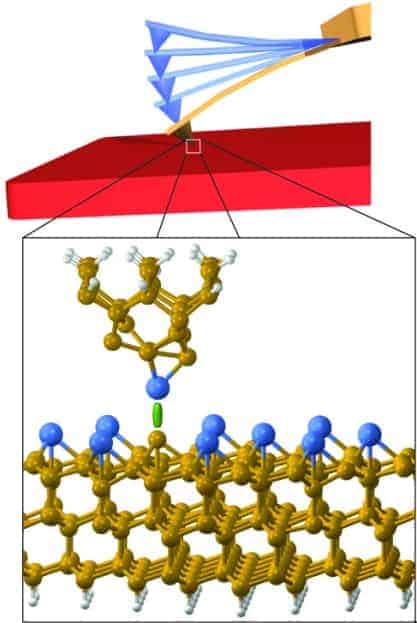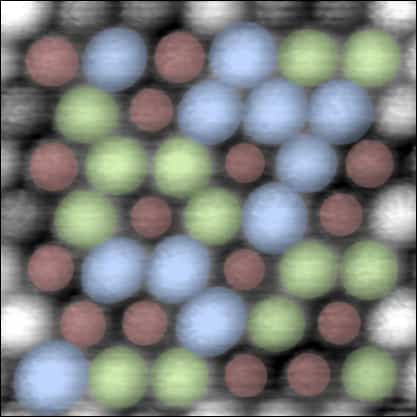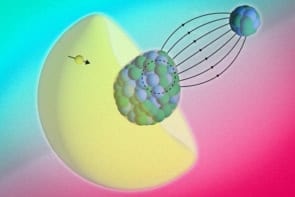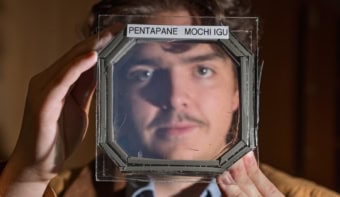Physicists in Japan, Spain and the Czech Republic have developed a new type of atomic force microscope (AFM) that can "fingerprint" the chemical identity of individual atoms on a material's surface. This is one step ahead of existing AFMs, which can only detect the position of atoms. The device determines local composition and structure using a precise calibration method, and can even be used to manipulate specific atomic species -- a feature that could enable nanostructures to be constructed "atom by atom" (Nature 446 64).

The AFM – invented some 20 years ago – is the best eye scientists have for examining atoms on the surfaces of both insulators and conductors. In the most refined “dynamic” mode a tiny, vibrating diamond probe is passed over a material that monitors varying chemical forces through changes in resonant frequency. These varying forces then allow scientists to produce a 3D, topographic map of the surface. But although this technique is adept at distinguishing different atoms, until now it has been unable to divulge their actual chemical identity, making it difficult to understand atomic structure.
Now Óscar Custance from Osaka University in Japan together with colleagues from Spain and the Czech Republic has shown that AFMs can indeed ascertain chemical identity if one already knows the basic composition of a material. This information gives the relative concentrations of atoms on a surface, which can then be correlated with the AFM’s normal topographic map to deduce which atoms lie where.
The key challenge with this approach, however, is that the attractive chemical forces responsible for the topographic map are heavily dependent on the quality of the probe’s tip – put simply, there is no way to give atomic species a “fingerprint” that remains consistent between measurements. Custance’s team got over this hurdle by inventing a sensitive calibration method that begins by taking detailed readings of how the force on the tip varies with distance for different atoms, amassing numerous force-distance curves. The physicists then pinpoint the values of maximum attraction on each curve and compare them to get relative values for each atomic species.
Because relative values have no dependence on external factors such as the probe’s tip, they can reliably serve as atomic fingerprints for characterizing the surfaces of different materials. “The capability of identifying atoms at surfaces could multiply the already outstanding possibilities that [dynamic AFM] offers,” said Custance.
Custance also told Physics Web that since publication they have even been able to manipulate single atoms, a technique that has been achieved before but without the added ability to identify several species. This opens up applications in fields including semiconductors, allowing engineers to manufacture better performing electronic devices by selectively doping nanoscale transistors.




